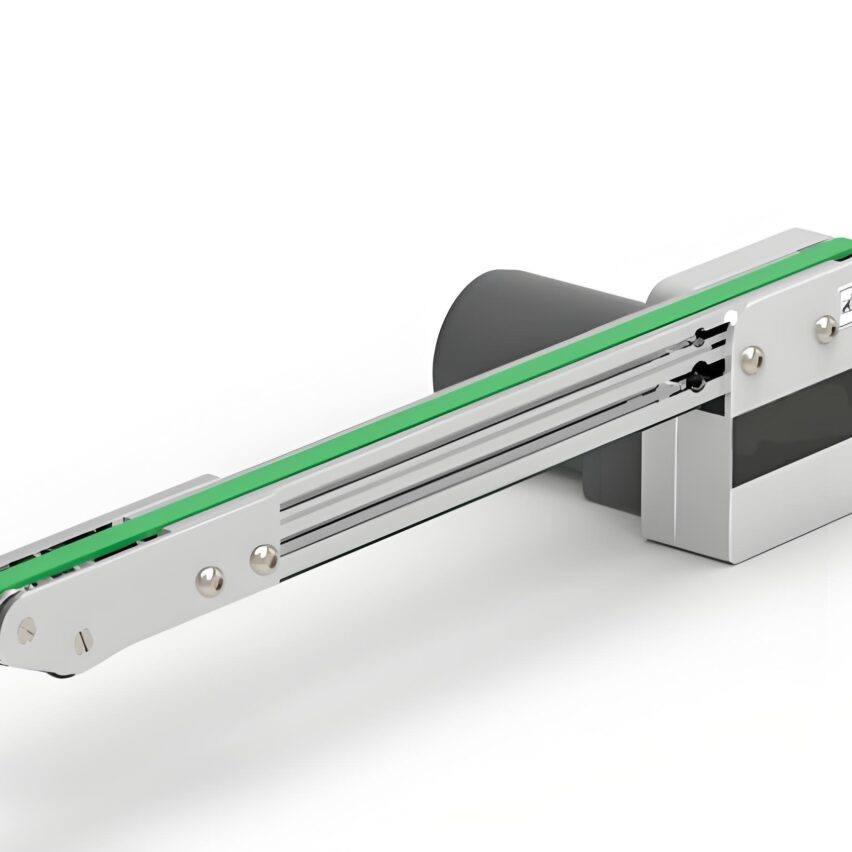Why is it difficult for traditional plate chain conveyor to meet the production of multi-vehicle mixed line? How to solve the problem of chassis assembly synchronisation by dual-vehicle AGV? Currently automobile manufacturing is facing the double challenge of flexible production and cost control, this article will be an in-depth analysis of friction drive and AGV two mainstream technical solutions of the core principle, application scenarios and economic benefits.
I. Friction Drive System: Structural Innovation to Crack Maintenance Pain Points
Conventional friction conveying relies on spring compression or cylinder drive and suffers from three major drawbacks: bolts break frequently (needing to be replaced weekly), weld joints are prone to cracking, and friction wheels wear out quickly. The root causes areRigid braced structures subjected to repeated alternating stresses(up to 250MPa), far exceeding the fatigue limit of the material.
The innovative programme uses three core technologies:
- Flexible linkage structureFriction wheels and compression wheels are linked by spring loaded tie rods, which rotate adaptively with the position of the trolley slide bar, eliminating the risk of fatigue fracture of the bracket.
- mechanical redistribution: Driving force is provided by spring mechanism (non-stent deformation), internal stress is reduced to less than 140MPa, and the life span is increased by 300%.
- Quick Adjustment DevicePushrod + steering sleeve design increases friction wheel pitch adjustment efficiency by 50% and compresses maintenance time from 4 hours to 30 minutes.
A car company after the application of the failure rate decreased by 80%, annual maintenance costs reduced by 420,000 yuan.
Second, the AGV programme: dual-vehicle linkage to achieve heavy-duty precision assembly
Traditional AGVs have fatal defects in heavy truck chassis assembly: the power of dual vehicles is not synchronised, resulting in the frame pulling out of alignment, and the whole vehicle cannot enter the lifting platform. German MAN Group pioneered theDual-vehicle linked AGVThe programme breaks new ground through three innovations:
- Power Intelligent Cutoff: Cutting off travelling power when the rear vehicle is loaded and retaining only the steering, the front vehicle tows the rear vehicle through the frame, eliminating the problem of network delays that can lead to pinch points.
- Non-contact power supply system: Induction cable laid in the loop, with on-board power manager for dynamic charging and discharging, supporting 24-hour continuous operation
- Wheelbase Adaptive TechnologyLaser distance meter automatically adjusts the distance between two vehicles (accuracy ±5mm), suitable for 5.8-7.2 metres wheelbase models mixed production
The actual benefits are amazing: more than the traditional plate chain lineInfrastructure cost reduction 30%In addition, production line adjustment efficiency increased by 601 TP3T and breakdown downtime decreased by 751 TP3T.
III. Scenario Adaptation Decision Model: Choosing the Right Solution to Save Millions
There are three main dimensions to consider when choosing a friction drive or AGV:
| Assessment dimensions | Scenarios for friction drives | AGV Application Scene |
|---|---|---|
| Vehicle complexity | Single platform (wheelbase difference <0.5m) | Multi-platform mixing lines (axial distance difference >1m) |
| Capacity requirements | Beat ≤ 60JPH (min/unit) | Beat ≥ 70JPH |
| conversion cost | Single metre retrofit cost <$30,000 | Initial investment >5 million/line |
Typical Case Comparison::
- FAW Hongqi Assembly Workshop: Adopting AGV cluster (72 units) + MAX scheduling system to achieve 100,000 units/year of multi-model mixed production and improve logistics efficiency by 40%.
- Interior trim line of a joint venture brand: modification of friction-driven flexible structure, saving 12 million yuan in equipment replacement costs
IV. New trends in technology integration: digital twins drive intelligent upgrading
Cutting-edge programmes are breaking through the limits of a single technology:
- Hybrid transportChassis mainline lifting and assembly by AGV (positioning accuracy ±0.5mm), friction accumulation system in cache area, shortened payback period to 2.3 years.
- 5G digital twin: Real-time mapping of physical line status to predict equipment failure (e.g., friction wheel wear warning accuracy of 92%)
- Dynamic beat optimisation: AGV scheduling algorithm response time <0.8 seconds, automatic adjustment of conveyor speed in case of unexpected orders (1-15m/min stepless variable speed)
The practice of a new energy vehicle enterprise has shown that the fusion solution has increased the tolerance of capacity fluctuation by 50%, and the changeover time has been reduced from 45 minutes to 9 minutes.
V. Pitfall avoidance guide: key points for implementation
- Friction Drive Selection Pitfalls::
- Avoid procurement of compression wheels not equipped with a cushioning device (life < 6 months)
- High-temperature workshop must use stainless steel chain (ordinary steel chain bearing capacity attenuation 20%)
- AGV deployment minefield::
- Dual-vehicle linkage requires three times the network bandwidth to be reserved (5G dedicated network recommended)
- Positioning error between hydraulic lifting platform and AGV should be <±2mm, otherwise it will lead to frame stalling.
Lesson: A heavy truck factory did not do the ground flatness calibration (± 3mm / m), AGV positioning offset triggered a batch of assembly failure, single-day loss of more than 800,000 yuan.
The technological evolution of chassis conveyor systems never stops - when the mechanical intelligence of friction drives meets the digital soul of AGVs, the flexible boundaries of automotive manufacturing are being redefined. The winner of the future lies in the ability to connect the steel skeleton with data flow, so that the production line has the vitality of self-evolution.













